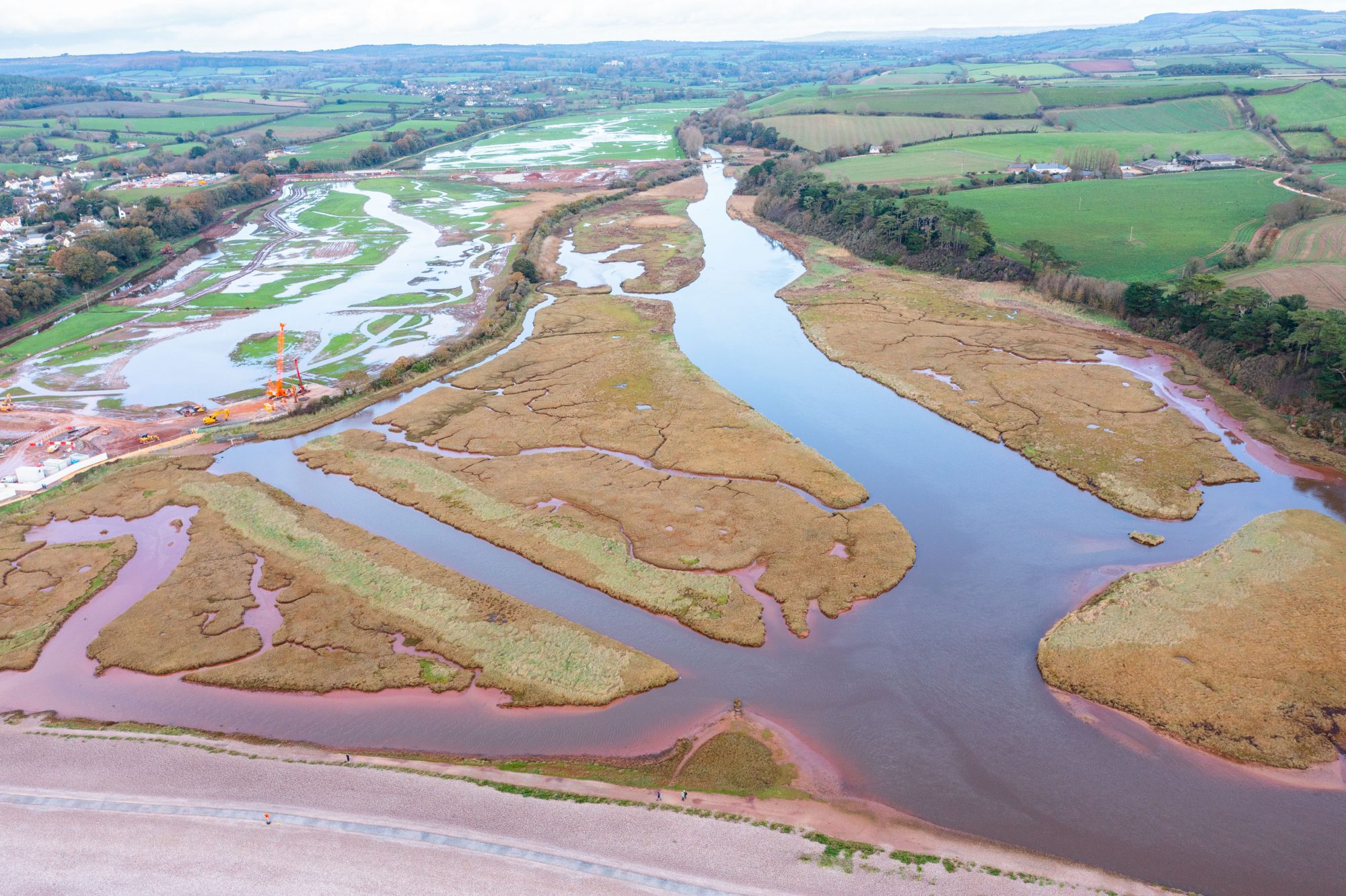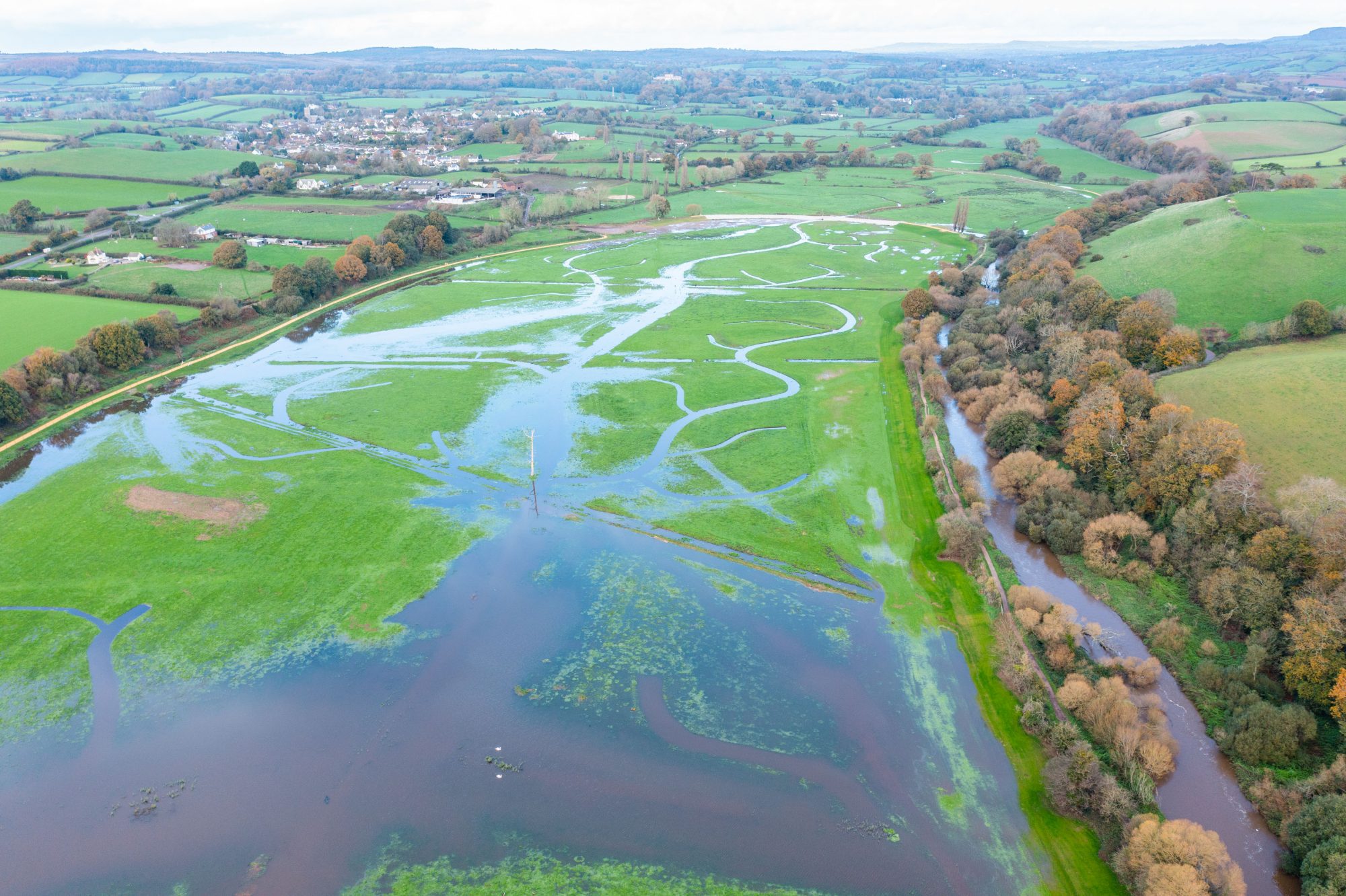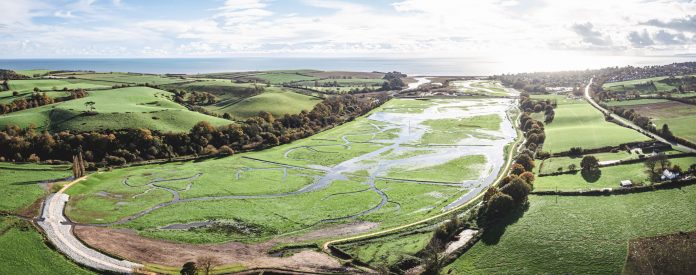With the world increasingly looking for ways to tackle the challenges brought about by climate change, the need for nature-based solutions to help improve our environment is more apparent than ever, explains PACCo, founders of the Lower Otter Restoration Project
One way of achieving this is to combine traditional construction with more natural, soft engineering and sustainable methods. This approach can support and enable long-term habitat restoration and not only deliver improved and more resilient infrastructure but also undo damaging man-made changes and return landscapes to a more naturally functioning state.
The Lower Otter Restoration Project (LORP)
An example of this hybrid approach is the Lower Otter Restoration Project (LORP) – an intertidal habitat creation project that shows how nature-based solutions can be used to adapt to the threats posed to coastal areas by climate change. Located in Budleigh Salterton in Devon, it is being delivered by the Environment Agency in partnership with the East Devon Pebblebed Heaths Conservation Trust and Clinton Devon Estates.
One of the unusual aspects of the project is the balance being achieved between infrastructure and ecological improvements. While many construction projects feel like a choice between one or the other, LORP is creating benefits for local communities, the environment, and its wildlife, in a coordinated way.
The project has been majority funded by the UK Government
The Lower Otter Restoration Project is the English arm of an Anglo-French venture called Promoting Adaptation to Changing Coasts (PACCo). It has been majority funded by the UK Government, with co-financing from the European Regional Development Fund (ERDF) through the Interreg V A France (Channel) England programme (2021 to 2023).
As part of the initiative, work is also going ahead on a similar project in the Saâne Valley in Normandy, France. Both valleys’ landscapes are not sustainable in the face of climate change after centuries of human modification.
Work on the pioneering project, which will see the River Otter and its estuary adapted and enhanced in the face of rising sea levels, is due to complete in summer 2023 after a breach is made in existing embankments to allow the tide to flow back into an area that was originally part of the estuary but drained for agriculture 200 years ago.

LORP has made substantial progress since work began in the spring of 2021. Contractors Kier have recently excavated a new creek network of channels that will allow tidal water to flood in and out of the site. The creeks will be connected to the current estuary via a 70-metre breach in the existing embankment, with a 75-metre footbridge spanning the gap to enable walkers to continue using the South West Coast Path.
Another major aspect of the project is constructing a new road, raised above the valley floor, to maintain flood-free access to the community on the other side of the valley. This includes a 30-metre road bridge spanning the new creek system.
Other works include reducing the risk of erosion of an old municipal waste tip; maintaining and improving public access such as raising the 900-metre-long footpath on the western edge of the valley; lowering sections of the existing embankments to floodplain level and the relocation of the local cricket club to a new location out of the floodplain.
The project will restore 55 hectares of salt marsh and mudflats
A Combined Sewer Overflow pipe at risk of erosion is also being relocated along a less vulnerable route. A tributary of the River Otter was previously contained and raised above the flood plain in a straight concrete channel on stilts (the former aqueduct), dramatically reducing its ecological value to fish, invertebrates and birds. Ecological improvement is expected with the brook now back reconnected to the historic flood plain.

Every step has included mitigation measures to reduce the impact of works on the environment and wildlife. This has included extensive ecological searches during vegetation clearance, rare plant translocation, archaeological surveys and ongoing ecological monitoring. The works have been timed to avoid disruption to bird nesting seasons and protected species such as dormouse.
On completion of the scheme, 55 hectares of salt marsh and mudflats will have been restored. This will attract an even greater variety of waders and wildfowl such as black-tailed godwit, oystercatcher, lapwing, dunlin, avocet, cormorant, grey plover, wigeon and brent geese. It will also attract fish including sea bass, mullet, gobies, sand smelt and flounder.
Using nature-based solutions to adapt to the increasing effects of climate change
Mike Williams, the Environment Agency, commented: “This project is hugely complex and has required a great deal of planning, shared learning, and hard work to get to this stage. Waiting for an inevitable catastrophic breach would have made repairs to local roads, vulnerable infrastructure and footpaths difficult and costly, so now is the time to act.
“We’re taking proactive steps to make vital changes in a funded and managed way so that future generations don’t pay the price for this generation’s lack of action.
“We want to show that it is possible to work alongside nature to adapt to the increasing effects of climate change in order to offset coastal squeeze; protect our inter-tidal habitats; provide health benefits and improved access to coastal environments for communities, and increase biodiversity and Blue Carbon capture.
“Working across borders with our partners in France, we hope the success and lessons learnt through the project will act as an international inspiration and guide to help other estuarine locations in urgent need of similar restoration. These initiatives are essential if we are to rebuild and sustain our coastal habitats and the socioeconomic benefits they provide.”

















